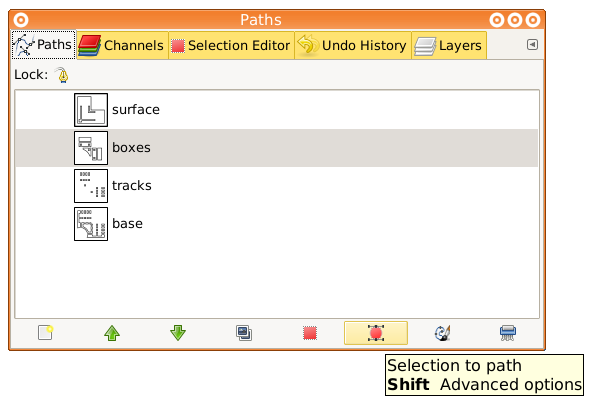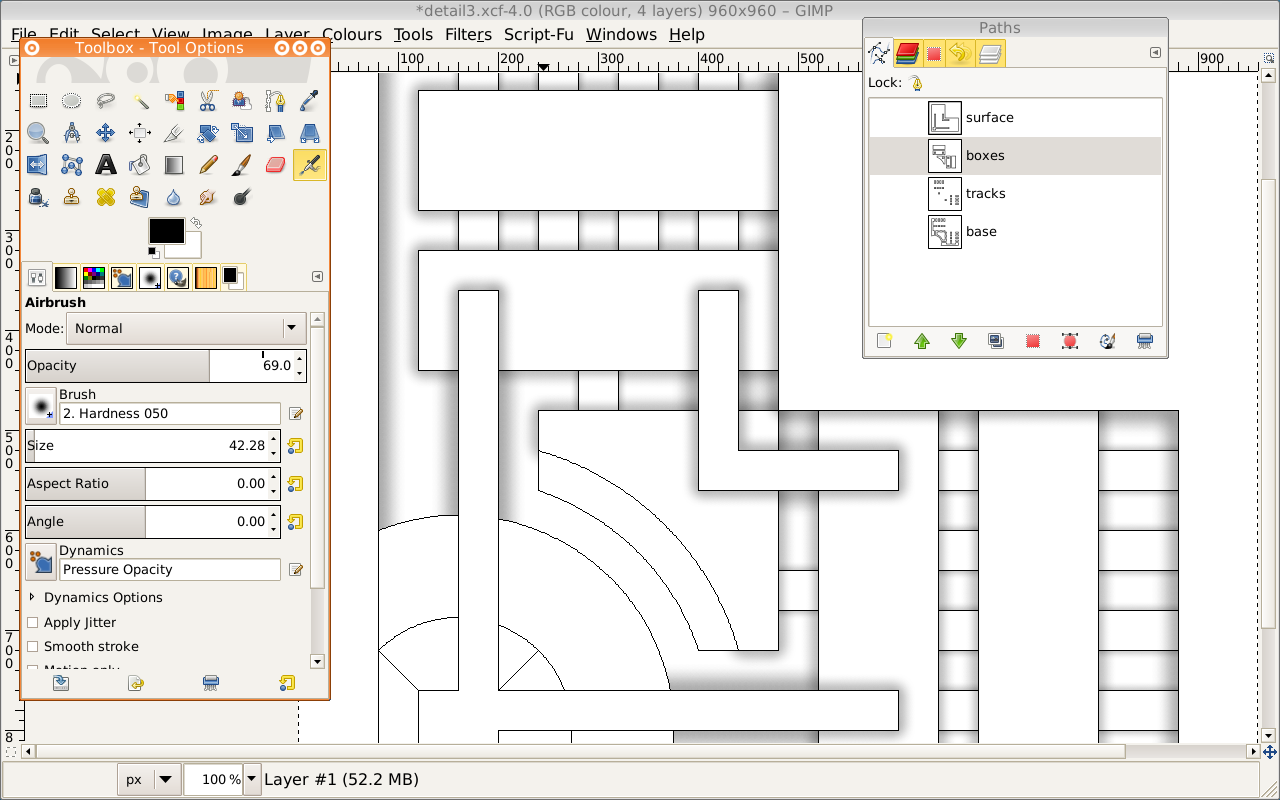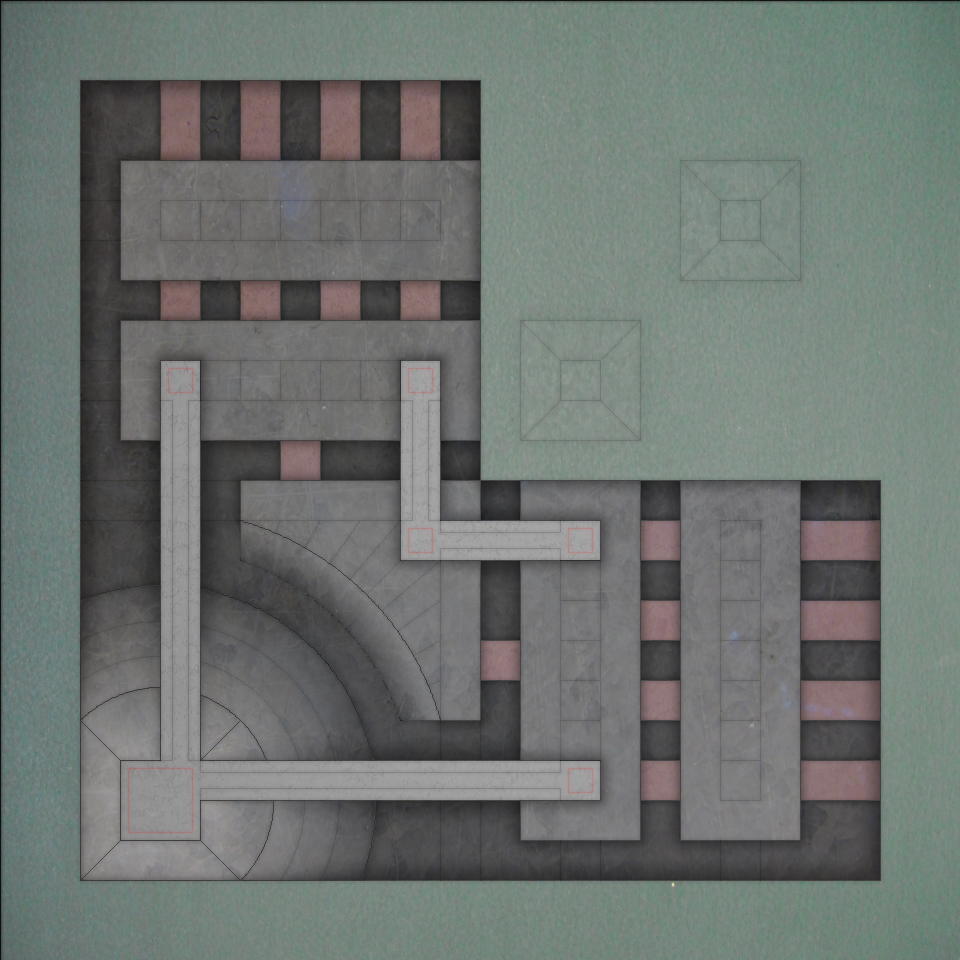Cutaway panels in GIMP
Contents
[hide]The outline
Draw your outline in another program - GIMP isn't really suited to this. LibreCAD is pretty good, Inkscape would also work. You're going to use it for selections, so make sure all the lines meet up. Leave a border - you can trim it off later if you don't want to include it in the final texture.
Import the file into GIMP. Duplicate the layer, and erase any stray lines that shouldn't be visible (useful to keep an intact backup, so you can still select the full shape of any component easily).
Once done, if you have a black or white background, turn it transparent with 'Colours' -> 'Colour to alpha'. You might want to create a blank black or white layer to put behind your outline as an editing aid to make the lines stand out - though remember to change it to a neutral colour at the end if any of it shows through.
Defining paths
Use 'Fuzzy select' (Shift + left click to add to selection) to select a group of components that you imagine should be of the same height. In the 'Paths' dialogue, select 'Selection to path'. Repeat, until you have a path for each height group.
Drawing shadows
First, set the parameters for the 'Airbrush' tool so it looks like a shadow, something like black at 60 - 80% opacity, with a round brush set at a little over double the size you really want. Create and activate a new transparent layer. Select a height group's path, and choose 'Path to selection' - this limits the area we're casting the shadow onto. Select a path for a higher up height group, and choose 'Paint along the path' -> 'Stroke with a paint tool'. Choose 'Airbrush' and hit 'Stroke'.
As you can see, you've projected a shadow from one height group onto another. By adjusting opacity and width for different combinations, you can create a consistent, and reasonably convincing illusion of depth.
Angled surfaces
If you have a surface which is supposed to be angled, you'll need to create a separate layer for it's shadow. Draw a shadow on it using the same method. Right click on the layer in the 'Layers' dialogue, and choose 'Add Layer Mask' -> 'White'. Now draw a dark to light gradient across the surface, the dark part being the area of shadow you want to fade. Right click on the layer and choose 'Show Layer Mask' to view it. Play around with the gradient's intensity, position, and offset, and the layer's opacity, till it looks right.
Textures and detailing
Add texture layers beneath your shadows.
Here I've imported another line layer from LibreCAD for extra detailing. I've duplicated it and applied a 'Gaussian blur' filter to one duplicate, and reduced opacity of both, to leave something of a defined edge without looking unnaturally sharp. I then did the same to the original outline. You need to pay attention to which areas are selected when applying the blur, or the lines will bleed into the wrong surfaces. It's easy enough using a combination of the previously made paths and the master outline - Shift-click on 'Path to selection' to add to the selection, Ctrl-click to subtract. You can also use 'Grow' in the Select menu to merge separate areas together.




